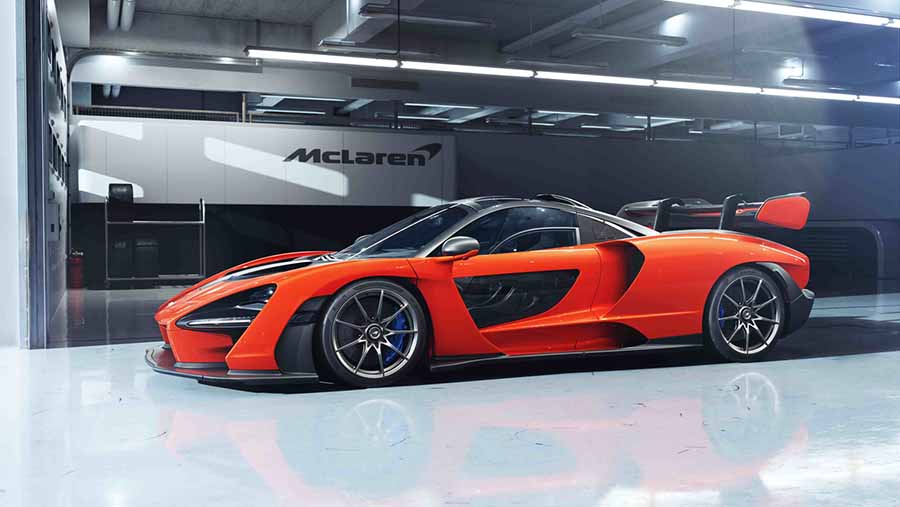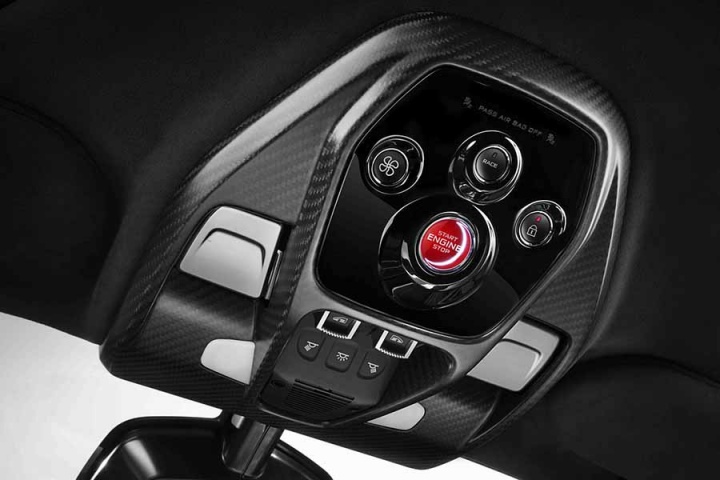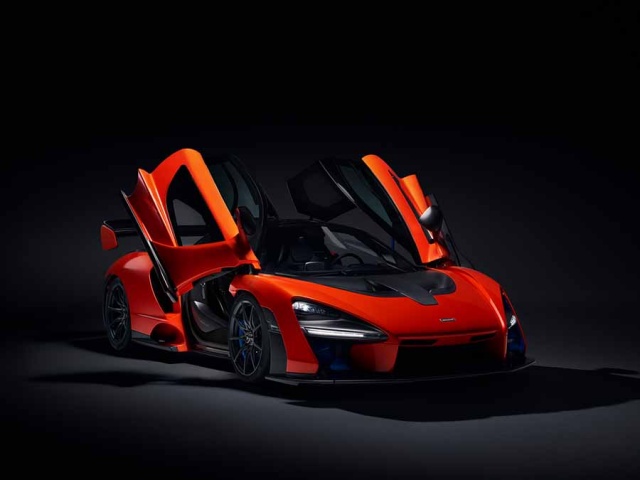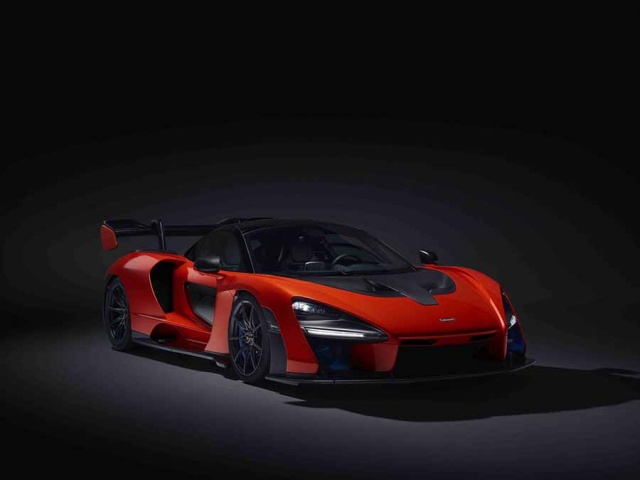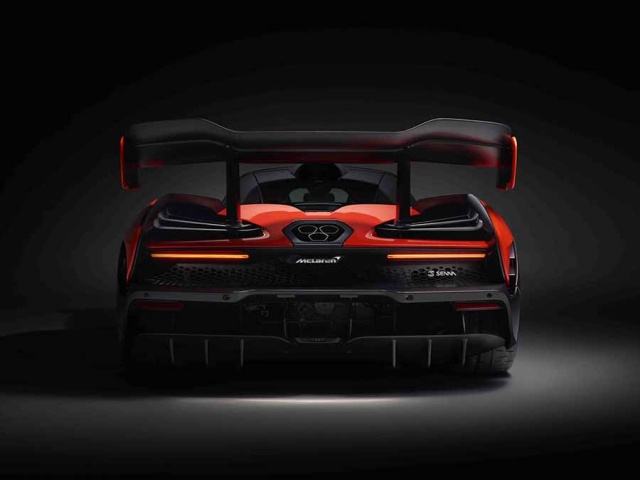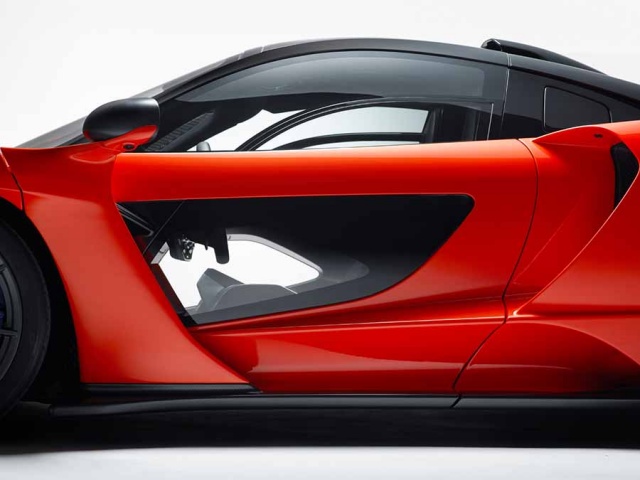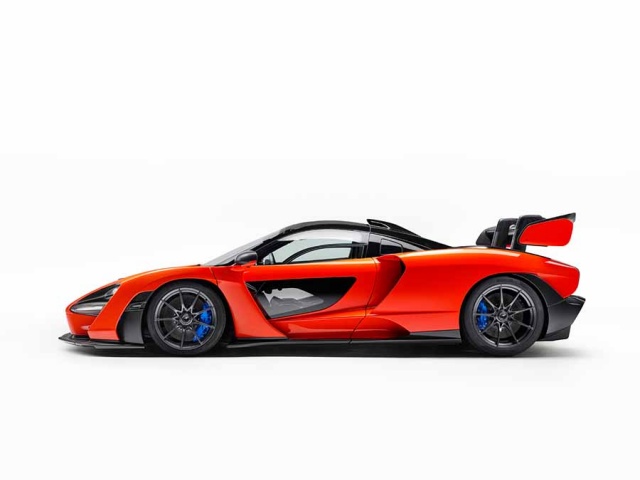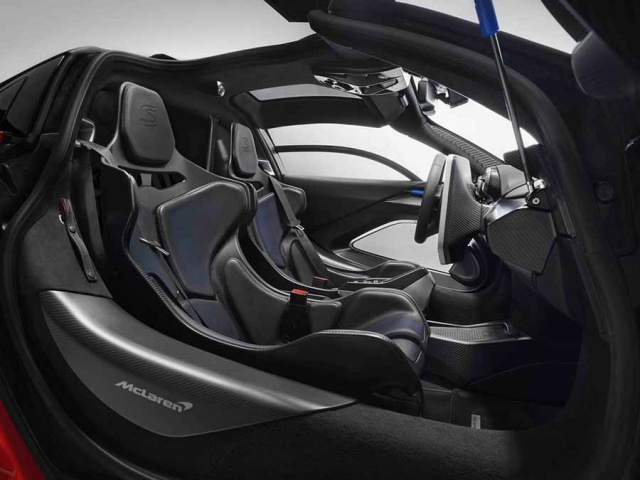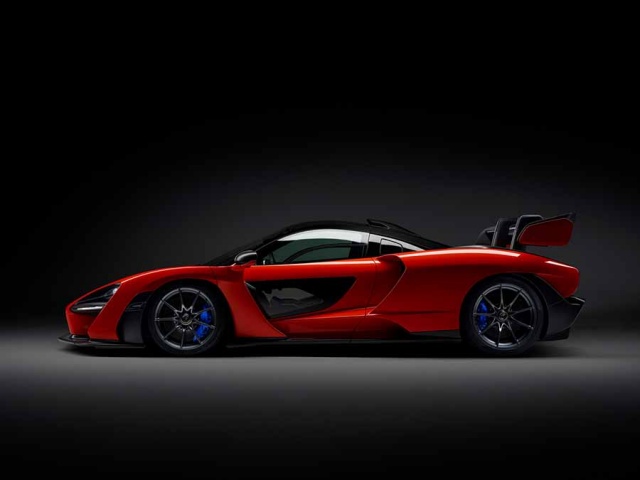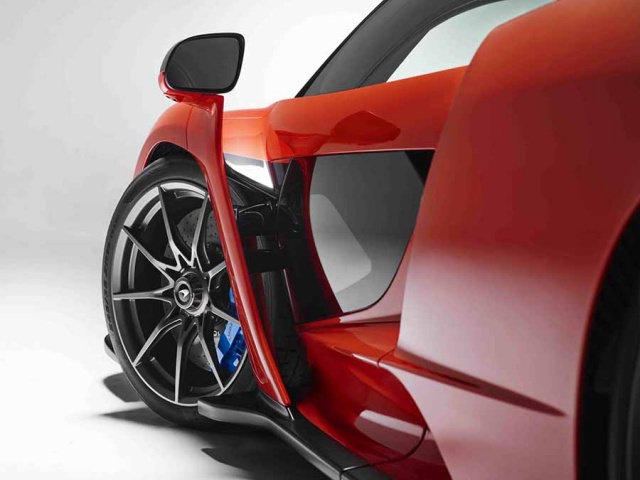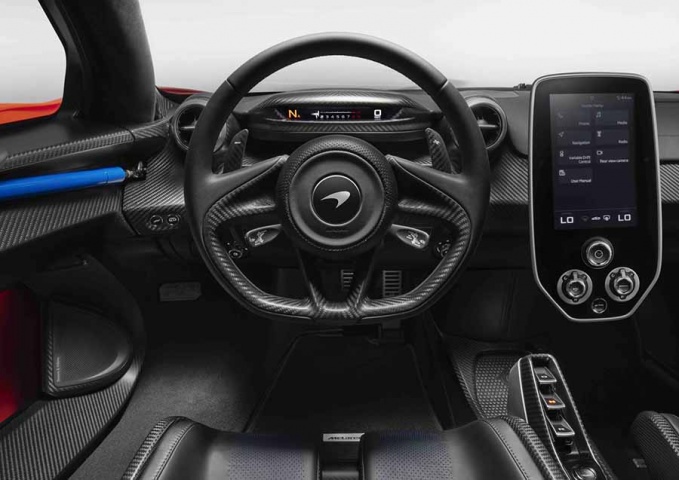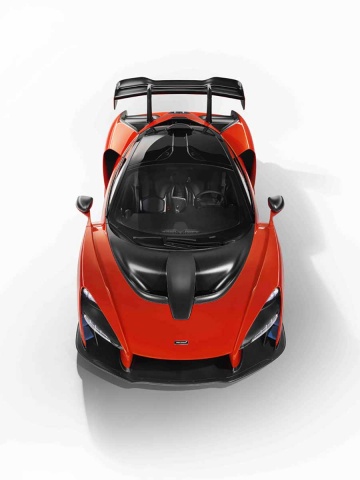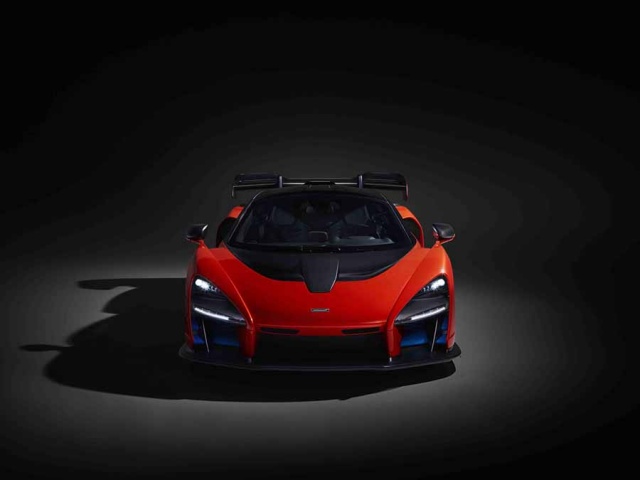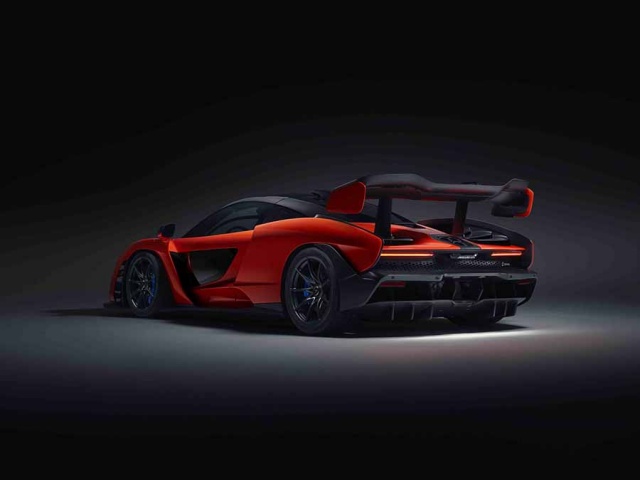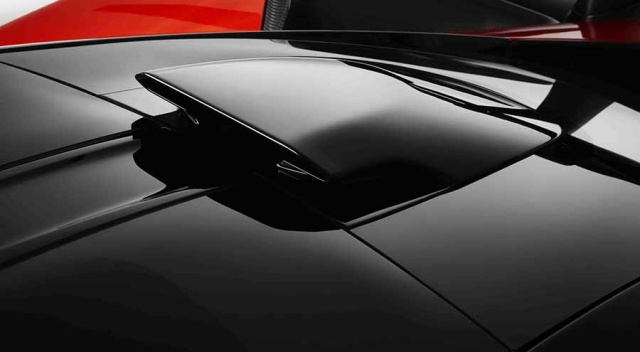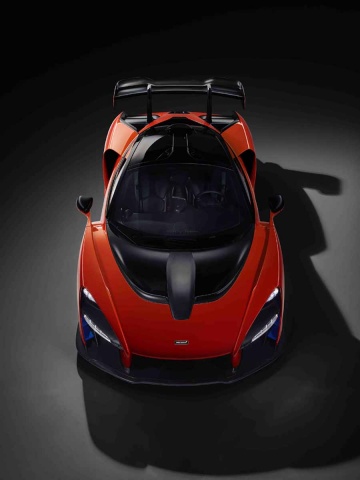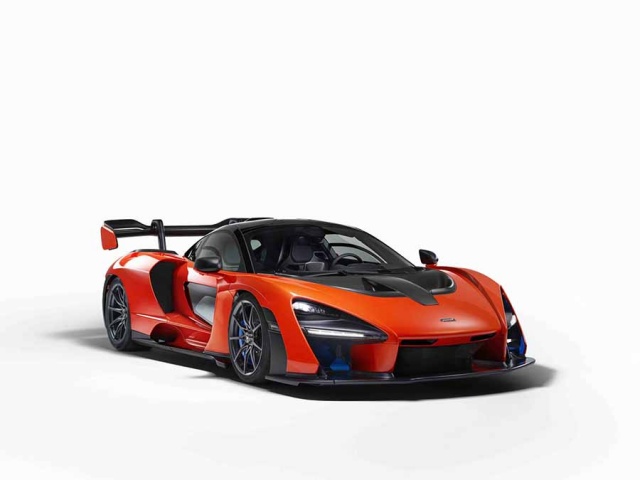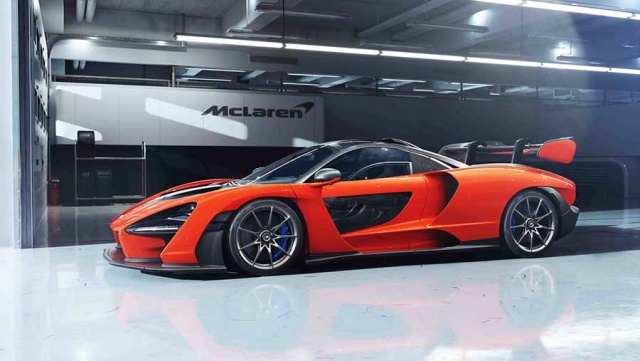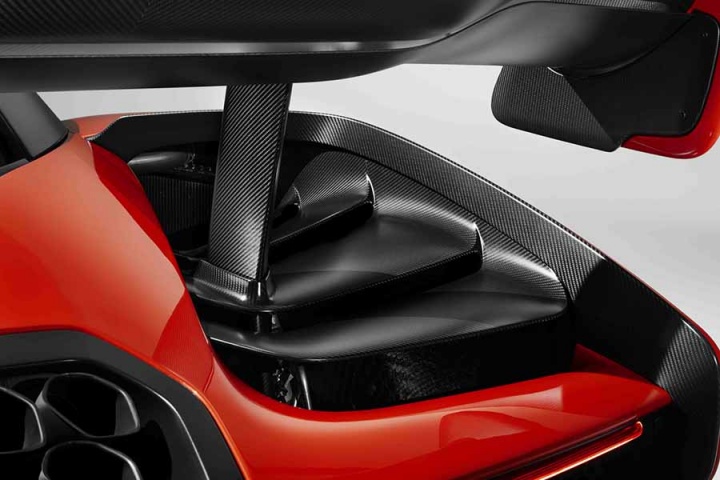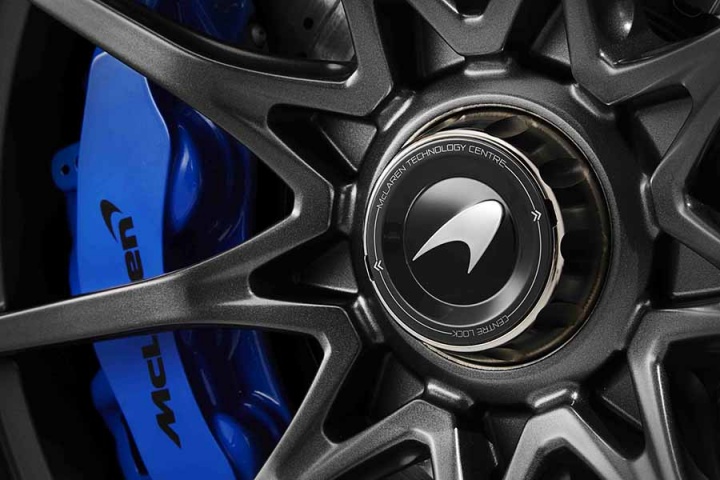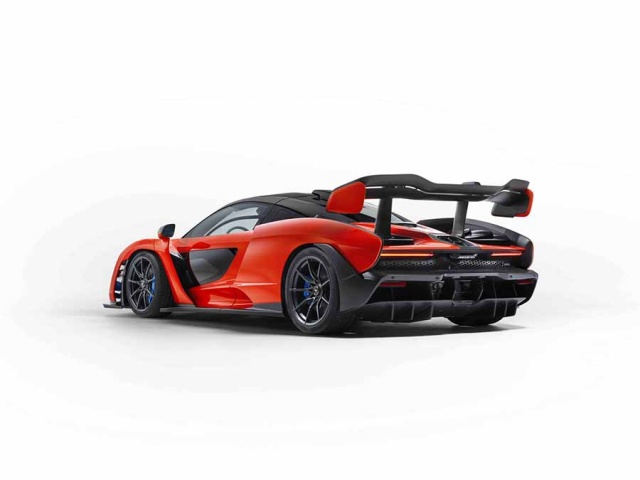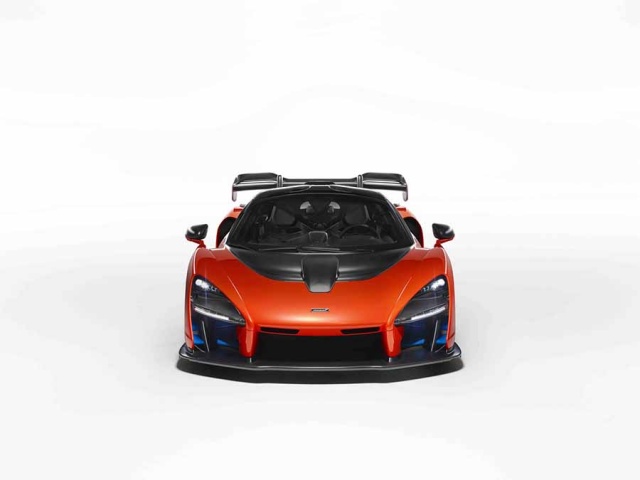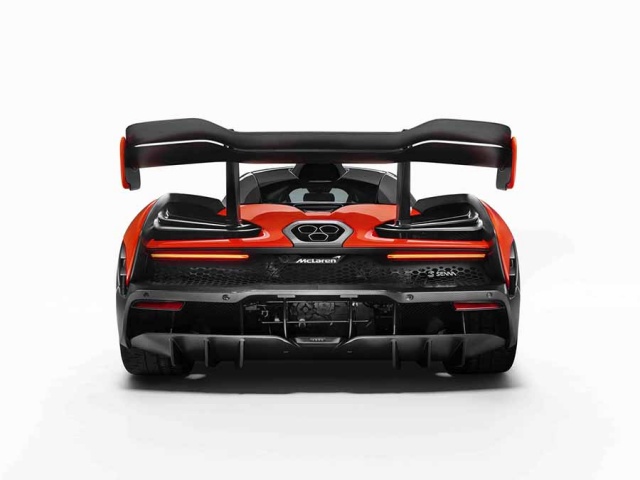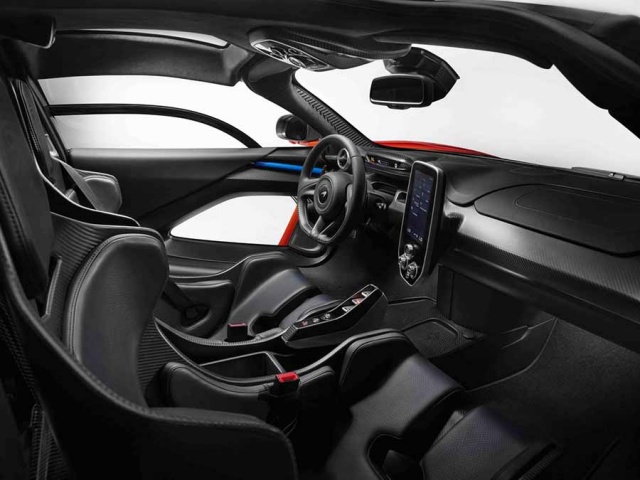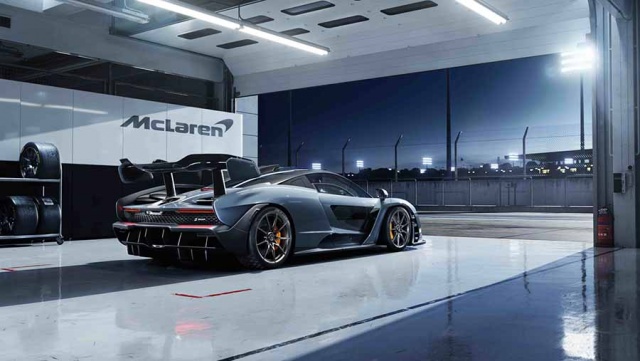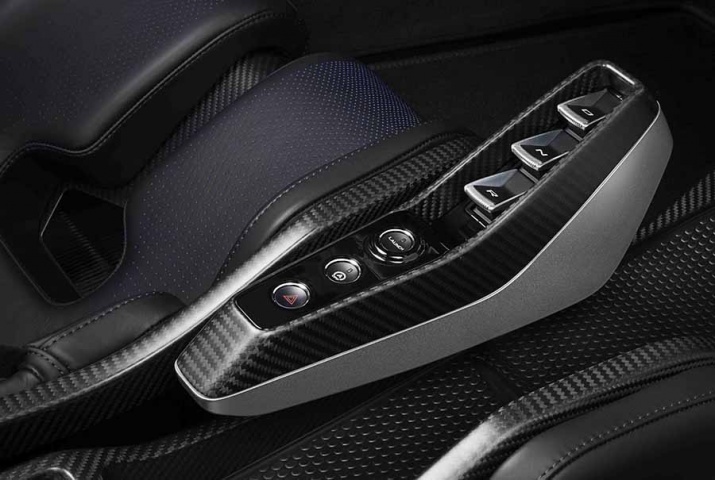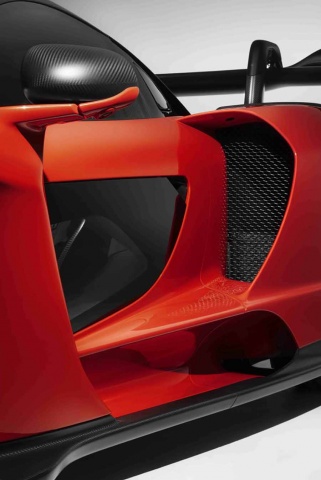What's the news?
It has been teased a number of times in previous months, but now we finally have our first look at McLaren's latest entry into its most exalted Ultimate Series canon of cars - this is the Senna, a road-legal track car that is powered by McLaren's most powerful internal combustion engine yet made.
Interior
It's a two-seater within but the emphasis, says McLaren, is firmly on the person in the driver's seat. Access to the cabin is via dihedral doors that hinge forwards and upwards, lending yet more theatre to the Senna, and the aperture has been designed to allow easy ingress/egress for someone who is wearing a helmet and race suit.
Like the chassis of the car, the doors are constructed of carbon fibre and those glass panels mean the release mechanisms and window switches have to be housed alongside the engine start button in a carbon fibre console above the driver's head. Lots and lots and lots of exposed carbon fibre reminds the lucky occupants that they're in the Senna, rather than - say - the piffling 720S, and customers can choose from Alcantara or leather to cover the seats, fascia and side airbags. All other interior trim is removed, to save weight and show off the construction of the doors.
Even the driver controls are limited, to reduce 'cockpit clutter', while the three-spoke wheel is utterly bereft of switchgear, with all information relayed via the McLaren Folding Driver Display and central infotainment screen. Also, don't think about taking excess baggage - the Senna's absolute devotion to track ability first and foremost means the only on-board storage is a chamber behind the seats with just enough room for two helmets and race suits.
Mechanicals
In the middle of the McLaren Senna is a 4.0-litre, twin-turbocharged, dry-sumped, flat-plane crank V8 codenamed the M840TR. This holds the distinction of being more powerful than any other combustion engine McLaren has ever stuffed into a road car - and yes, that does include the P1, which developed 737hp; it got to its peak 903hp/900Nm numbers thanks to electric augmentation.
The Senna, though, has nice, round outputs of 800hp and 800Nm, sent to the rear wheels alone via a dual-clutch, seven-speed gearbox, controlled by carbon fibre paddles that are 'optimised to be used with or without racing gloves'. Coupled with that light weight, the Senna has a startling power-to-weight ratio of 668hp-per-tonne. McLaren, as yet, doesn't state any performance figures or lap times, but if you'll permit us to make an extrapolation from the above data, we conclude that it will be quick with a capital 'F'.
Elsewhere, McLaren says the use of unique engine mounts that transmit low-frequency noise from the V8 into the cabin, as well as the snorkel on the roof, gives the Senna a fantastic soundtrack and it also uses RaceActive Chassis Control II (RCC II) hydraulic suspension with interconnected dampers and hydraulic anti-roll bars, featuring variable ride height and adjustable damper stiffness. The brakes are carbon ceramic items as standard and Pirelli P Zero Trofeo R tyres are fitted to the Senna for the maximum of grip. Furthermore, McLaren says that 'painstaking work on the damping and steering weight has ensured that the car feels fully 'alive' well below its upper limits'.
Anything else?
So, just 500 McLaren Sennas will be built and they cost £750,000 apiece in the UK, or around €850,000 on a direct exchange. Apparently, all 500 examples have already been accounted for, so don't go expecting to buy one, even if you're one of Ireland's super-rich.
Mike Flewitt, CEO for McLaren Automotive, said: "The McLaren Senna is a car like no other: the personification of McLaren's motorsport DNA, legalised for road use but designed and developed from the outset to excel on a circuit. Every element of this new Ultimate Series McLaren has an uncompromised performance focus, honed to ensure the purest possible connection between driver and machine and deliver the ultimate track driving experience in the way that only a McLaren can."
And what do the Senna family think of the use of old Ayrton's name? Over to Bruno Senna, his nephew, who happens to be a racing driver and McLaren ambassador: "Our family is extremely proud of the naming of the new Ultimate Series McLaren Senna. This is the first project that really connects with Ayrton's racing spirit and performance. The McLaren Senna honours my uncle because it is so utterly dedicated to delivering a circuit experience that allows a driver to be the best they can possibly be. There is an absolute, seamless connection between car and driver and this pure engagement, these sensory cues that a driver responds to and relies upon, ensure an experience so focused and immersive that you are left in awe of the depths of excellence the McLaren Senna possesses."

